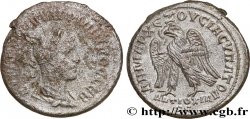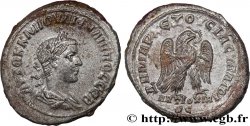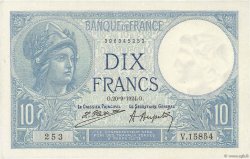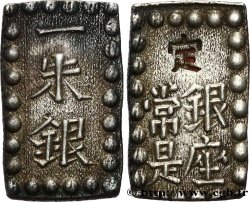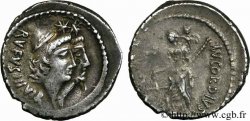E-auction 45-18509 - brm_245682 - FILIPPO II FIGLIO Antoninien
Devi Sign-in ed essere un offerente approvato fare un'offerta, Login per fare offerte. Conti sono soggetti ad approvazione e di approvazione sono raggiunti entro 48 ore. Non aspettare fino al giorno di una vendita si chiude per registrarti.Confermando la tua offerta su questo oggetto ti impegni ad un contratto legalmente vincolante per l'acquisto di questo prodotto e fare clic su «offerta» costituisce accettazione dei termini di utilizzo de e-auctions cgb.fr.
Offerta deve essere collocato in euro gli importi interi vendita only.The si chiuderà al momento sulla descrizione dell'oggetto, eventuali offerte pervenute al sito dopo l'orario di chiusura non verranno eseguite. Volte transmition possono variare e le offerte potrebbero essere respinto se si attende per gli ultimi secondi. Per ulteriori informazioni ckeck le FAQ.
SENZA COSTI PER GLI ACQUIRENTI.
SENZA COSTI PER GLI ACQUIRENTI.
| Valutazione : | 75 € |
| Prezzo : | 53 € |
| Offerta maxima : | 53 € |
| Data di fine vendita : | 24 febbraio 2014 16:26:30 |
| partecipanti : | 7 partecipanti |
Tipo : Antoninien
Data: mi -fin
Data: 247
Nome della officina / città: Antioche
Metallo : billone
Diametro : 20 mm
Asse di coniazione : 12 h.
Peso : 3,18 g.
Grado di rarità : R2
Officine: 2e
Commenti sullo stato di conservazione:
Exemplaire sur un petit flan épais, parfaitement centré des deux côtés. Beauportrait. Joli revers. Fine patine grise
N° nelle opere di riferimento :
Diritto
Titolatura diritto : IMP M IVL PHILIPPVS AVG.
Descrittivo diritto : Buste radié, drapé et cuirassé de Philippe II auguste à gauche, vu de trois quarts en avant (A11).
Traduzione diritto : "Imperator Marcus Iulius Philippus Augustus", (L’empereur Marc Jules Philippe auguste).
Rovescio
Titolatura rovescio : AEQVITAS AVGG.
Descrittivo rovescio : Aequitas (l'Équité) drapée, debout à gauche, tenant une balance de la main droite et une corne d'abondance de la gauche.
Traduzione rovescio : "Aequitas Augustorum" (L'Équité des augustes).
Commento
Poids léger. Pour ce type avec ce type de buste à gauche, beaucoup plus rare, Thibaut Marchal a relevé vingt-cinq exemplaires. Sur notre exemplaire, le portrait de Philippe fait plutôt penser à son père. D’autre part, le buste ne semble pas cuirassé, mais seulement drapé. Les ptéryges de l’épaule droite permettent d’entrevoir le buste cuirassé absent sous la tranche de l’épaule gauche. Au revers, la légende AEQVITAS AVG est au singulier alors que nous avons deux augustes, Philippe I et son fils Philippe II, normalement indiqué par le doublement du G pour AVGG. Pour Thibaut Marchal, l’absence du second G serait le moyen que les graveurs de l’atelier d’Antioche aurait utilisé pour différencier les deuxième et troisième émission de l’atelier.
Lightweight. For this type with this type of bust on the left, much rarer, Thibaut Marchal noted twenty-five examples. On our example, the portrait of Philip is more reminiscent of his father. On the other hand, the bust does not seem armored, but only draped. The pteryges of the right shoulder allow us to glimpse the armored bust missing under the edge of the left shoulder. On the reverse, the legend AEQVITAS AVG is in the singular while we have two augusts, Philip I and his son Philip II, normally indicated by the doubling of the G for AVGG. For Thibaut Marchal, the absence of the second G would be the means that the engravers of the Antioch workshop would have used to differentiate the second and third issues of the workshop
Lightweight. For this type with this type of bust on the left, much rarer, Thibaut Marchal noted twenty-five examples. On our example, the portrait of Philip is more reminiscent of his father. On the other hand, the bust does not seem armored, but only draped. The pteryges of the right shoulder allow us to glimpse the armored bust missing under the edge of the left shoulder. On the reverse, the legend AEQVITAS AVG is in the singular while we have two augusts, Philip I and his son Philip II, normally indicated by the doubling of the G for AVGG. For Thibaut Marchal, the absence of the second G would be the means that the engravers of the Antioch workshop would have used to differentiate the second and third issues of the workshop








 Segnalare un errore
Segnalare un errore Stampate la pagina
Stampate la pagina Condividi mia selezione
Condividi mia selezione Fai una domanda
Fai una domanda Consegnare / vendere
Consegnare / vendere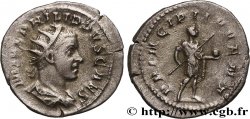
 Descrittivo
Descrittivo

